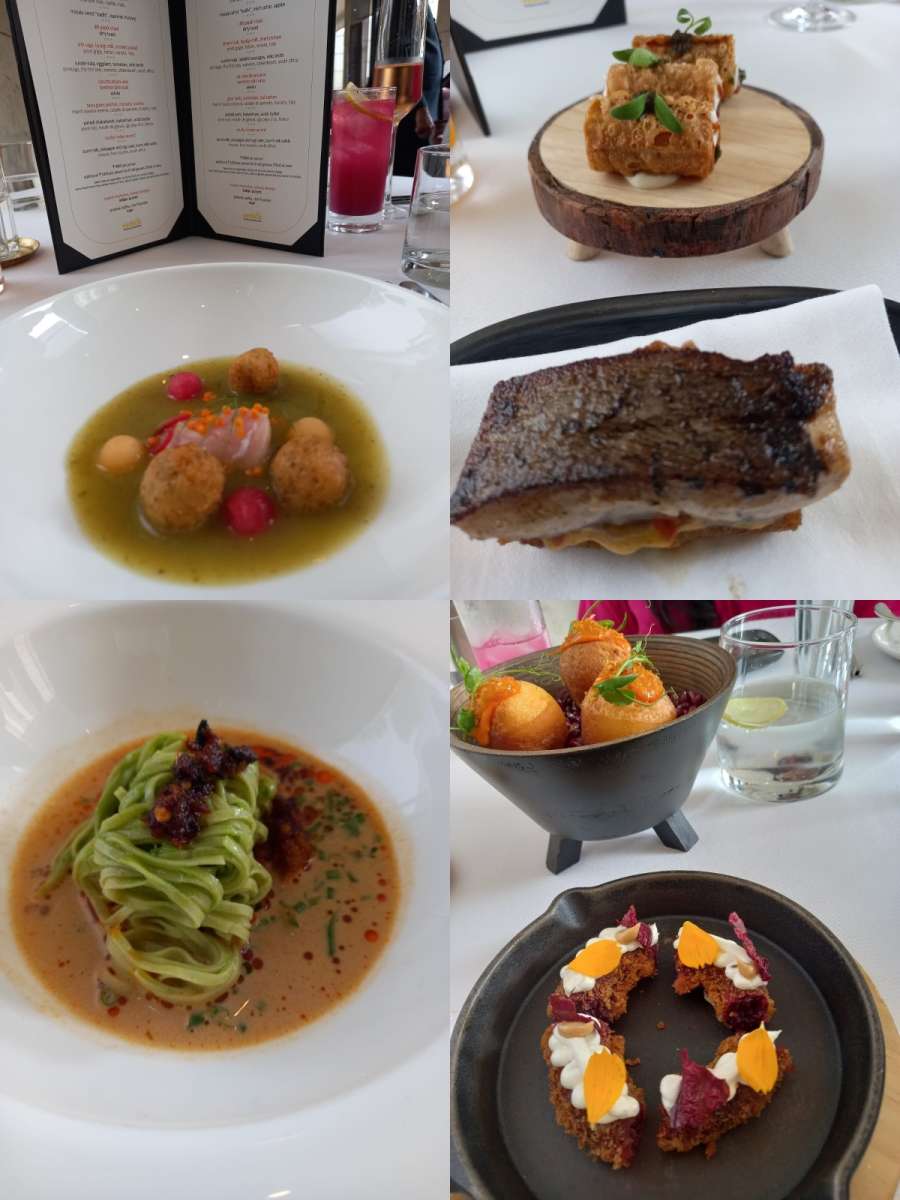The combination was seamless; for the non-vegetarians a sliver of hamachi, or yellowtail, a fish that is a favourite of sushi makers, replaced the ‘tadgola’, but even diehard carnivores would have loved the ice apple…reports Asian Lite News
Manish Mehrotra is acknowledged as the foremost exponent of ‘Progressive Indian Cuisine’. Prateek Sadhu is the new star on the block, having garnered a wall full of accolades during his stint at Mumbai’s Masque restaurant, and then deciding to relocate to a Himalayan village named Darwa, a 40-minute drive away from Kasauli in Himachal Pradesh, to open his passion restaurant, Naar, in the middle of nowhere.
The two maestros, one seasoned and the other, young, joined forces and pulled off a culinary coup at Indian Accent, first in Mumbai and then in New Delhi (sadly, for only two days in each city). And as we would expect from them, the 12-course tasting menu they laid out was not only a feast for the senses (with certain items, predictably, overshadowing the others), but also an education for the palate.
We found out, for instance, that the ‘sundarkala’, presented like a bundle of fine threads in a ‘sinki’ broth with Ladakhi sausages, are noodles made with ‘mandua atta’ (finger millet flour) that originated from a village in Chamoli district, Uttarakhand. The ‘sinki’ broth is a Nepali soup prepared with preserved and fermented tap root sections of radishes. Indeed an invigorating combination presented like a work of art — it got our full marks.
One of the dishes christened by Sadhu as ‘Dirty Toast’ turned out to be an open sandwich topped up by minimally cooked Himachali trout. The whole wheat bread turned out to be a ‘khambir’, which Ladakhis have usually every morning with their favourite butter tea. It only needed the touch of an inventive chef to acquire an elevated profile.
The tasting menu opened for the vegetarians with a slice of ‘tadgola’, the fleshy and juicy fruit of the sugar palm tree, which grows abundantly in our coastal regions, sitting in a pool of raw mango ‘panna’ with Panna pakodis (a tribute to the famous ‘paneer pakodas’ that have been best-sellers at the shop of Ludhiana’s Sardar Panna Singh for the past 70 years) and little watermelon roundels.
The combination was seamless; for the non-vegetarians a sliver of hamachi, or yellowtail, a fish that is a favourite of sushi makers, replaced the ‘tadgola’, but even diehard carnivores would have loved the ice apple.
Another such surprise was the ‘askalu’, a festive dish from Kullu that many compare with idlis. The ‘askalu’ are made with fermented rice flour slurry in a stone utensil with compartments named ‘askali’. Sadhu described the ‘askalu’, with their crispy exterior and soft insides, as Himachali donuts.
It came with Mehrotra’s favourite ‘Calcutta biryani aloo’ (the chef’s theory is that the potatoes that are integral to the Calcutta biryani are sponges that soak up the vibrant flavours of the preparation and therefore deserve a life of their own) and the ‘beetroot dahi vada’, which completely blew our mind! Both were like little umami bombs.
The dish that got everyone licking their fingers was the ghee lamb. The meat extracted from lamb shanks was paired with sunchokes (the white and creamy roots of a flowering tree related to the sunflower family that are mistakenly called Jerusalem artichokes) and ‘dal kachori’ (the vegetarians got pooris stuffed with ‘sattu’).
Dal kachori with ‘ghee lamb’? Well, it tasted divine when dipped into the thick jus enriched by ghee as well as the gelatinous extract from the lamb shanks that went into making the dish. And how did the ‘sattu’-stuffed pooris pair with the vegetarian option — tawa green jackfruit, mustard and coconut? Our vegetarian friend gave a satisfied thumbs up.
The final round of the coup came in the form and shape of the dessert platter — an explosive avant garde interpretation of the Kashmiri delicacy, ‘shufta’ (dry fruits and lightly fried paneer squares mixed seamlessly with ghee, sugar and spice powders). It was accompanied by a delectable pineapple and ragi cake to ensure no one went back home half-satisfied.
If there was proof needed for why master chefs are so prized in this world, one had only to dig into the sensation Mehrotra and Sadhu laid out for us. Even their little surprises, from Mickey Mouse-shaped roasted mini papads to the byadgi chilli sauce — surprisingly with a hint of natural sweetness and expectedly bright red — accompanying the lemon crab and dried shrimps, left us with a wow feeling.
No wonder, an entire generation of young chefs looks up to Mehrotra for inspiration and even before Sadhu opened his restaurant “up in the hills”, he had 380 reservation requests sitting in his email account.
Today, Sadhu has patrons flying in from Chennai and Bengaluru to experience his five-hour meals, and the residents of the village, scenting money, are already constructing additional floors on top of their houses to inveigle those who come to the restaurant to spend some days in that little slice of paradise.
ALSO READ-Chef Basant Rana’s Nepali Food Fest at The Park New Delhi
